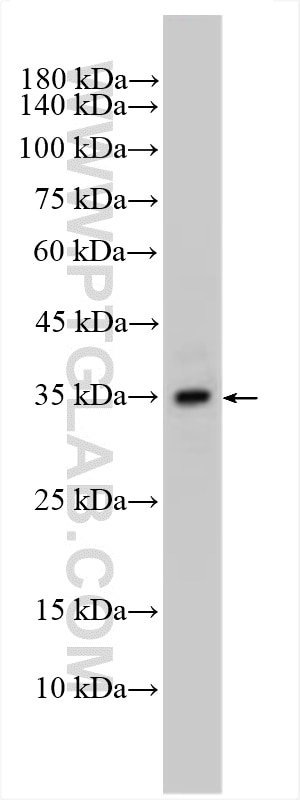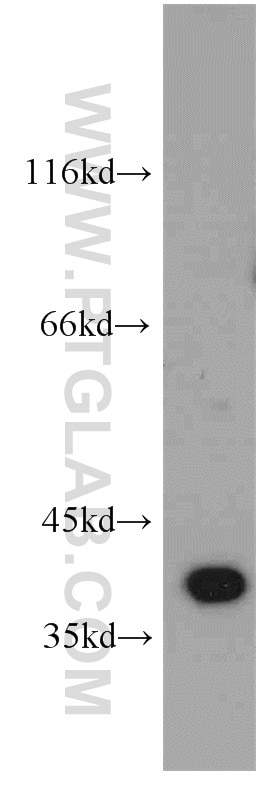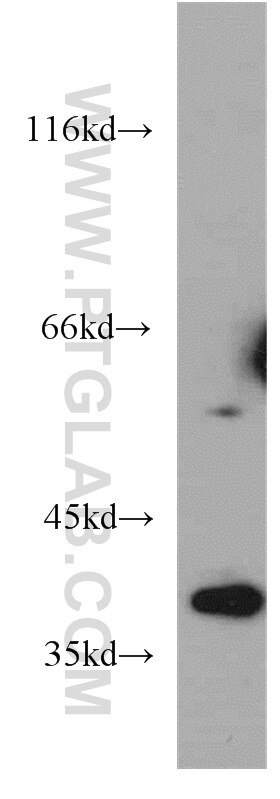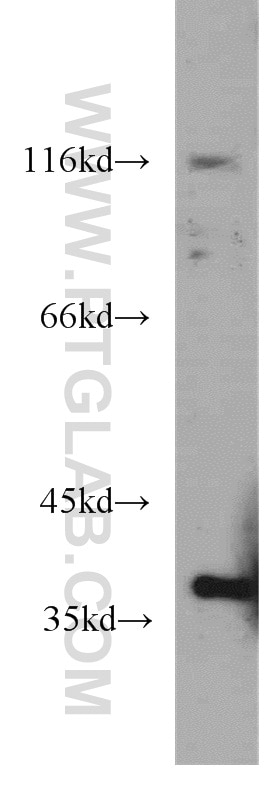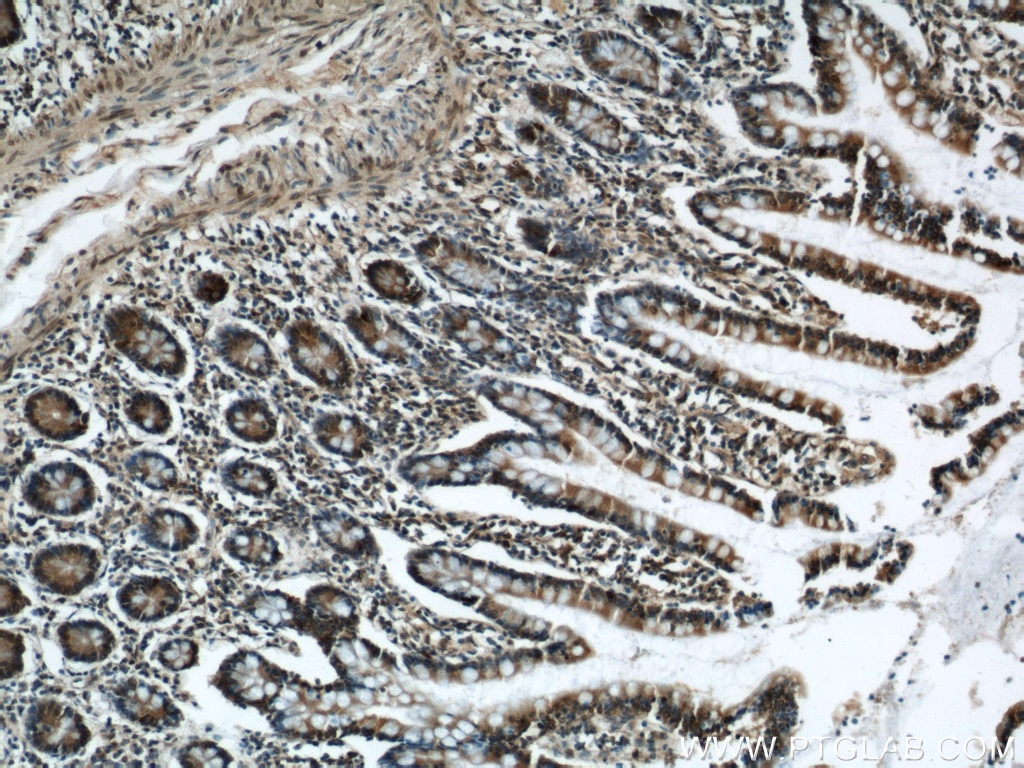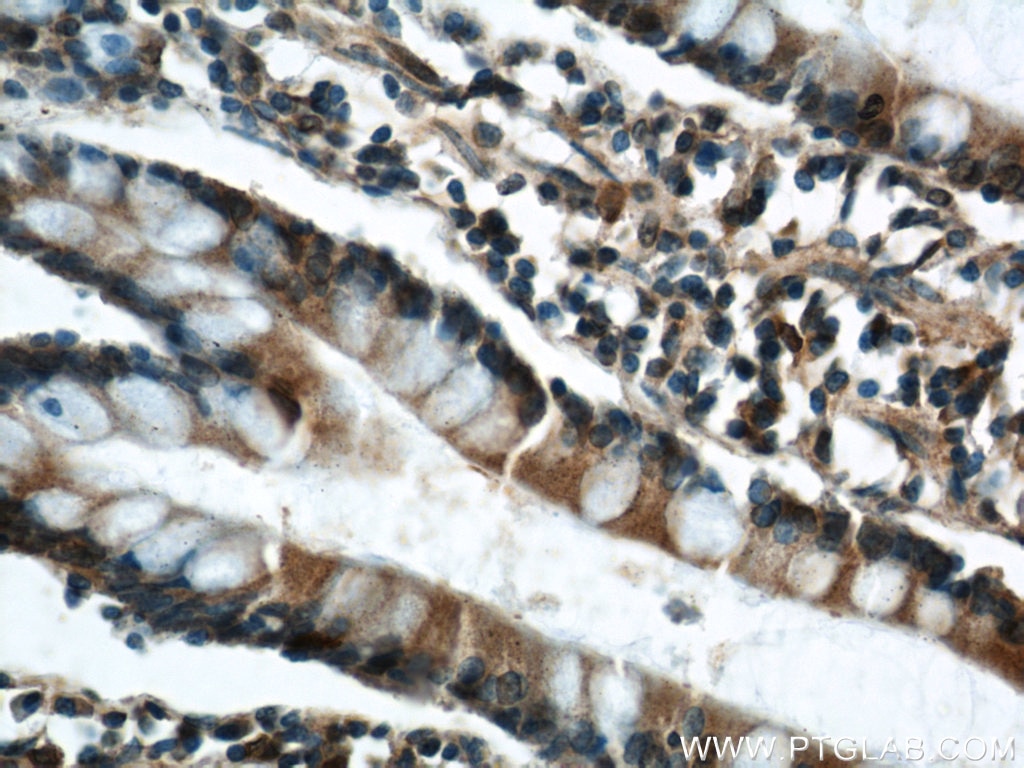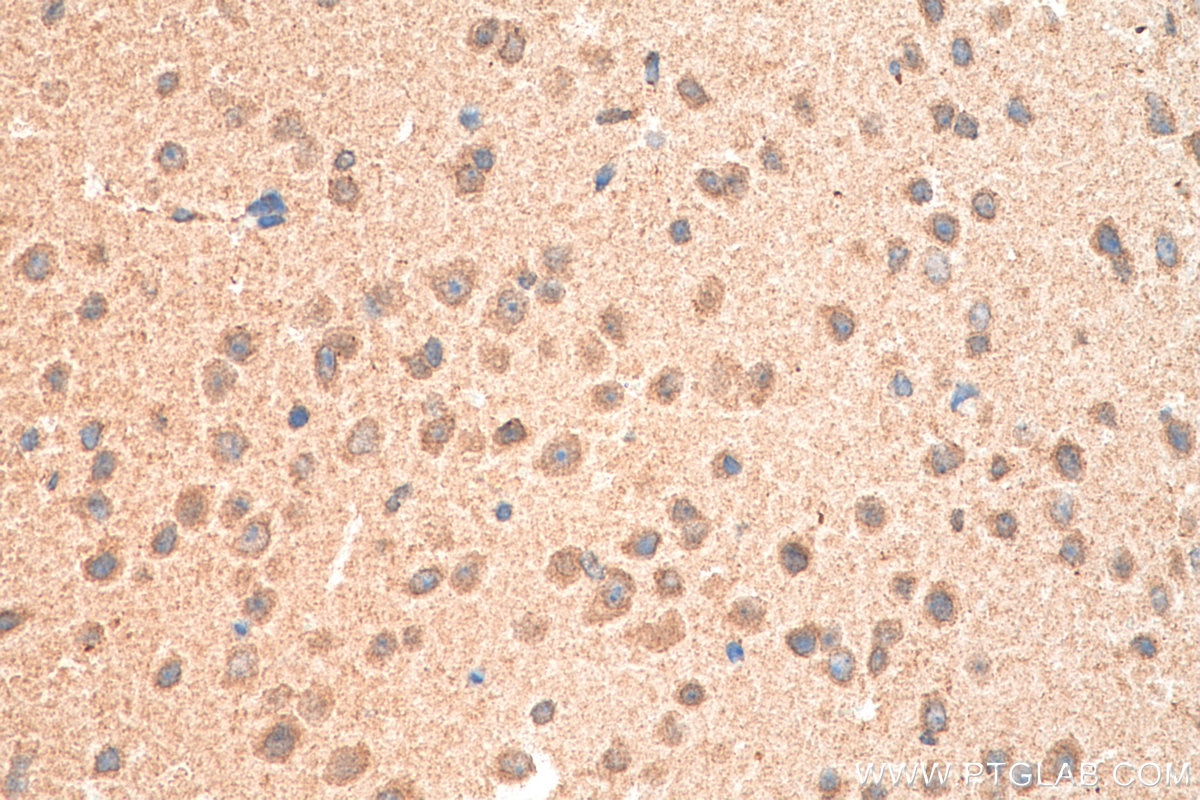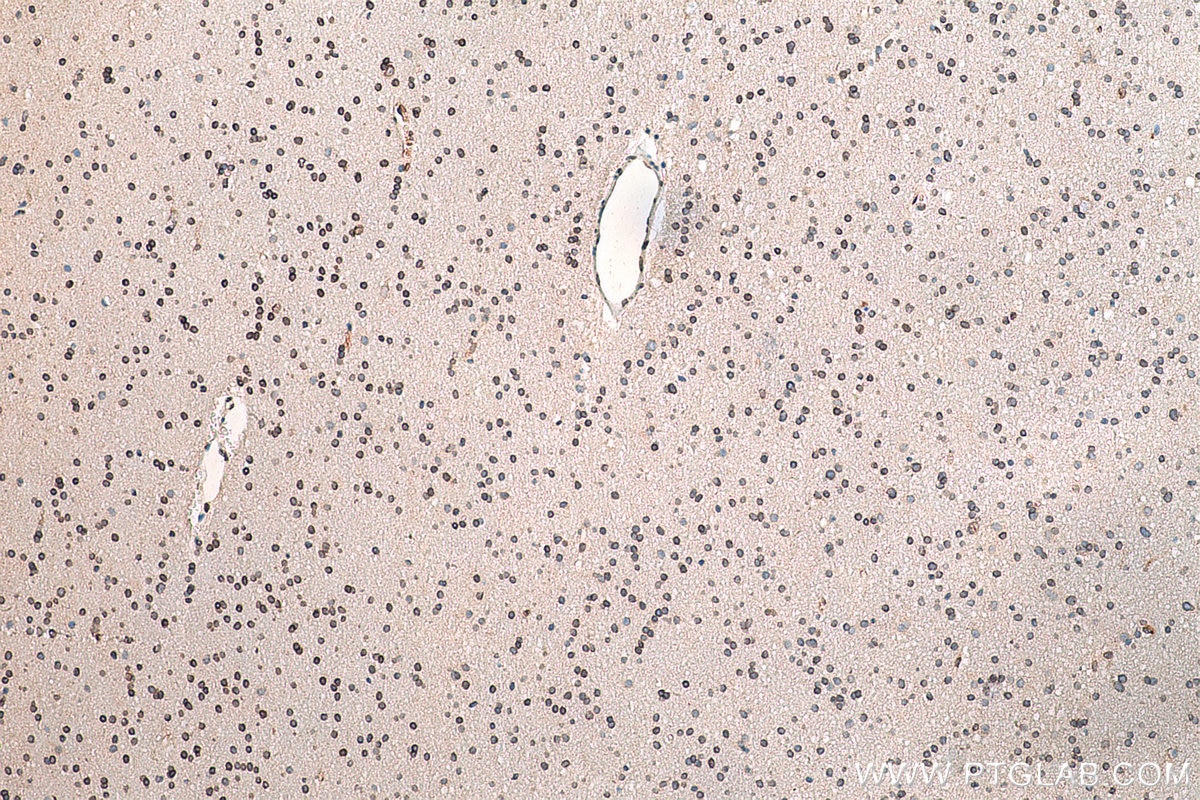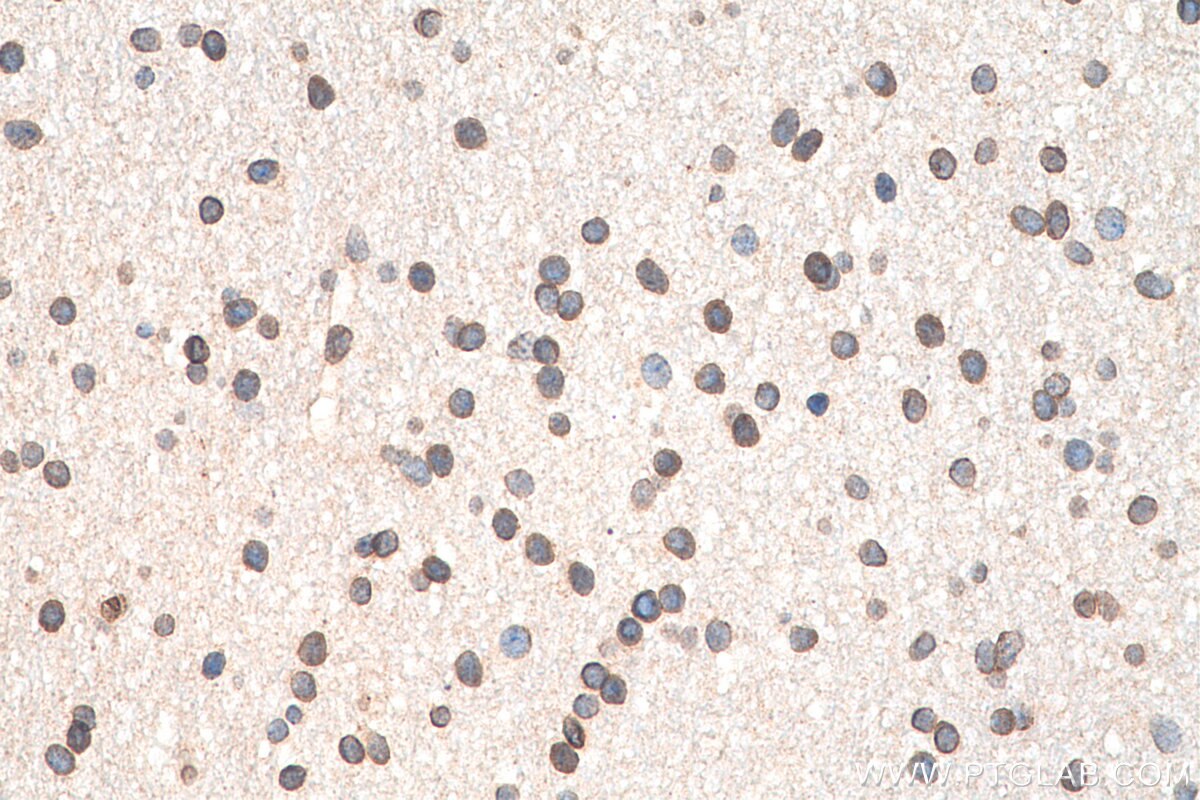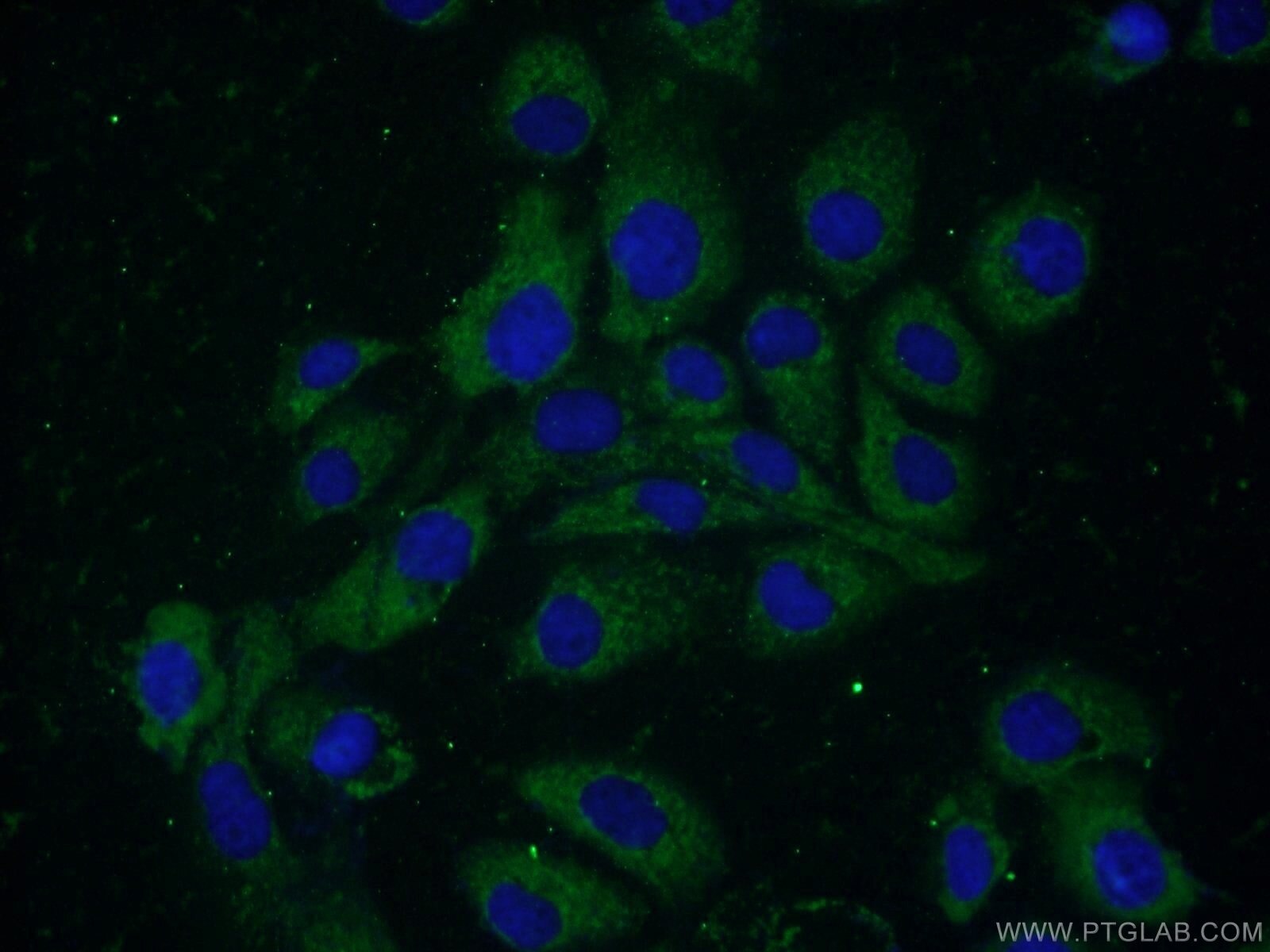- Featured Product
- KD/KO Validated
ELOVL4 Polyklonaler Antikörper
ELOVL4 Polyklonal Antikörper für WB, IHC, IF/ICC, ELISA
Wirt / Isotyp
Kaninchen / IgG
Getestete Reaktivität
human, Maus, Ratte
Anwendung
WB, IHC, IF/ICC, ELISA
Konjugation
Unkonjugiert
Kat-Nr. : 55023-1-AP
Synonyme
Geprüfte Anwendungen
| Erfolgreiche Detektion in WB | Neuro-2a-Zellen, A431-Zellen, Maushirngewebe, Y79-Zellen |
| Erfolgreiche Detektion in IHC | humanes Gliomgewebe, humanes Dünndarmgewebe, Maushirngewebe Hinweis: Antigendemaskierung mit TE-Puffer pH 9,0 empfohlen. (*) Wahlweise kann die Antigendemaskierung auch mit Citratpuffer pH 6,0 erfolgen. |
| Erfolgreiche Detektion in IF/ICC | A431-Zellen |
Empfohlene Verdünnung
| Anwendung | Verdünnung |
|---|---|
| Western Blot (WB) | WB : 1:500-1:1000 |
| Immunhistochemie (IHC) | IHC : 1:250-1:1000 |
| Immunfluoreszenz (IF)/ICC | IF/ICC : 1:10-1:100 |
| It is recommended that this reagent should be titrated in each testing system to obtain optimal results. | |
| Sample-dependent, check data in validation data gallery | |
Veröffentlichte Anwendungen
| KD/KO | See 1 publications below |
| WB | See 7 publications below |
| IHC | See 2 publications below |
Produktinformation
55023-1-AP bindet in WB, IHC, IF/ICC, ELISA ELOVL4 und zeigt Reaktivität mit human, Maus, Ratten
| Getestete Reaktivität | human, Maus, Ratte |
| In Publikationen genannte Reaktivität | human, Maus, Ratte |
| Wirt / Isotyp | Kaninchen / IgG |
| Klonalität | Polyklonal |
| Typ | Antikörper |
| Immunogen | Peptid |
| Vollständiger Name | elongation of very long chain fatty acids (FEN1/Elo2, SUR4/Elo3, yeast)-like 4 |
| Berechnetes Molekulargewicht | 37 kDa |
| Beobachtetes Molekulargewicht | 37-40 kDa |
| GenBank-Zugangsnummer | NM_022726 |
| Gene symbol | ELOVL4 |
| Gene ID (NCBI) | 6785 |
| Konjugation | Unkonjugiert |
| Form | Liquid |
| Reinigungsmethode | Antigen-Affinitätsreinigung |
| Lagerungspuffer | PBS with 0.02% sodium azide and 50% glycerol |
| Lagerungsbedingungen | Bei -20°C lagern. Nach dem Versand ein Jahr lang stabil Aliquotieren ist bei -20oC Lagerung nicht notwendig. 20ul Größen enthalten 0,1% BSA. |
Hintergrundinformationen
ELOVL4, also named as ADMD, STGD2 and STGD3, belongs to the ELO family. It is a component of the fatty acid elongation system. Elovl4 is involved in the biosynthesis of very long chain fatty acids. It seems to represent a photoreceptor-specific component of the fatty acid elongation system residing on the endoplasmic reticulum. ELOVL4 may be implicated in docosahexaenoic acid (DHA) biosynthesis, which requires dietary consumption of the essential alpha-linolenic acid and a subsequent series of three elongation steps. Defects in ELOVL4 are the cause of Stargardt disease type 3 (STGD3). The antibody is specific to ELOVL4.
Protokolle
| PRODUKTSPEZIFISCHE PROTOKOLLE | |
|---|---|
| WB protocol for ELOVL4 antibody 55023-1-AP | Protokoll herunterladen |
| IHC protocol for ELOVL4 antibody 55023-1-AP | Protokoll herunterladenl |
| IF protocol for ELOVL4 antibody 55023-1-AP | Protokoll herunterladen |
| STANDARD-PROTOKOLLE | |
|---|---|
| Klicken Sie hier, um unsere Standardprotokolle anzuzeigen |
Publikationen
| Species | Application | Title |
|---|---|---|
Nat Commun Unraveling the spatial organization and development of human thymocytes through integration of spatial transcriptomics and single-cell multi-omics profiling
| ||
Ocul Surf PPARγ regulates meibocyte differentiation and lipid synthesis of cultured human meibomian gland epithelial cells (hMGEC). | ||
Int J Mol Sci In Human and Mouse Spino-Cerebellar Tissue, Ataxin-2 Expansion Affects Ceramide-Sphingomyelin Metabolism. | ||
Invest Ophthalmol Vis Sci Isotretinoin Impairs the Secretory Function of Meibomian Gland Via the PPARγ Signaling Pathway. | ||
Lipids Phytosphingosine Increases Biosynthesis of Phytoceramide by Uniquely Stimulating the Expression of Dihydroceramide C4-desaturase (DES2) in Cultured Human Keratinocytes. |
